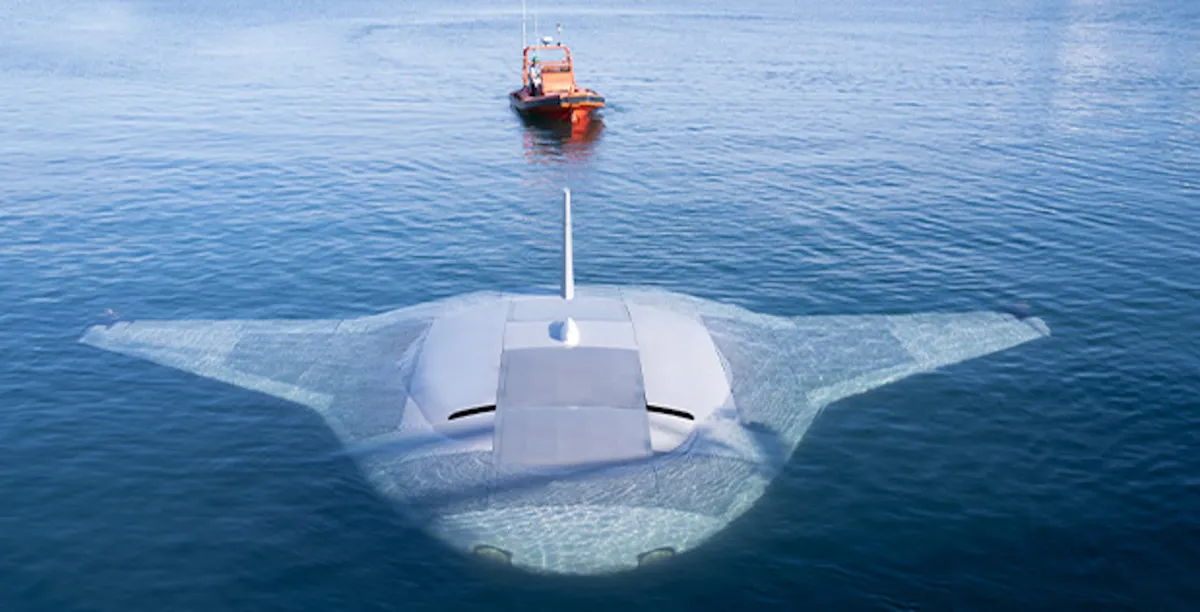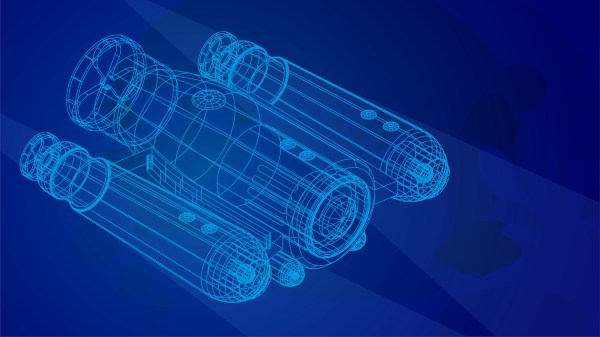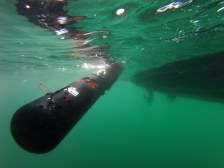DARPA tests undersea Manta Ray drone prototype, looks to transition tech to Navy

A prototype unmanned underwater vehicle built by Northrop Grumman has completed a key series of tests, the Defense Advanced Research Projects Agency announced Wednesday.
The effort was part of DARPA’s Manta Ray program, which began in 2020 and aims to advance technologies for a “new class” of autonomous UUVs that could be used by the Navy for long-range and long-duration missions.
According to the agency, the project seeks to demonstrate:
- Novel energy management techniques for UUV operations and undersea energy harvesting techniques at operationally relevant depths
- Low-power, high-efficiency undersea propulsion systems
- New low-power means of underwater detection and classification of hazards or counter-detection threats
- Mission management approaches for extended durations while accounting for dynamic maritime environments
- Unique approaches for leveraging existing maritime data sets and exploiting novel maritime parameters for high-efficiency navigation and/or command, control and communications.
- New approaches to mitigate biofouling, corrosion, and other material degradation for long-duration missions
Northrop Grumman and PacMar Technologies are the two performers for the maritime drone program. DARPA announced the awardees for phase 2 of the project in December 2021.
Northrop’s platform, which was described as an “extra-large” UUV, recently completed “full-scale, in-water testing” off the coast of Southern California in February and March, DARPA said in the release.
“Testing demonstrated at-sea hydrodynamic performance, including submerged operations using all the vehicle’s modes of propulsion and steering: buoyancy, propellers, and control surfaces,” according to the agency.
DARPA is in talks with the Navy on the next steps for testing and transitioning the technology, the organization said.
“Our successful, full-scale Manta Ray testing validates the vehicle’s readiness to advance toward real-world operations after being rapidly assembled in the field from modular subsections,” Kyle Woerner, DARPA program manager for Manta Ray, said in a statement. “Once deployed, the vehicle uses efficient, buoyancy-driven gliding to move through the water. The craft is designed with several payload bays of multiple sizes and types to enable a wide variety of naval mission sets.”
In September, the organization announced that an in-water “splash test” was conducted off the coast of Oahu, Hawaii, for PacMar’s scaled prototype. The objective was to verify sensors, vehicle hydrodynamic performance and autonomy behaviors.
“Splashing a vehicle is a major milestone for an undersea program,” Woerner said in a statement after that event concluded. “This test provides important insights into key systems, allows us to validate assumptions and models, and gives us valuable data in preparation for our upcoming full-scale at-sea demonstrations.”
PacMar continues to test its full-scale energy-harvesting system, DARPA noted in Wednesday’s release.
The Manta Ray program is unfolding as the U.S. Navy pursues new robo-vessels to help fulfill its vision for a future “hybrid” fleet of manned and unmanned platforms and enabling technologies such as artificial intelligence and autonomy.
The sea service has been experimenting with a variety of UUVs, uncrewed surface vehicles and unmanned aerial systems.
Maritime drones are seen as a cost-effective means of boosting the Navy’s capacity and capabilities while reducing risks to sailors by keeping them out of harm’s way at a time when service officials view China as their main competitor and are preparing for a potential conflict in the Pacific region.
Chief of Naval Operations Adm. Lisa Franchetti sees robotic systems and other emerging technologies as a way to “put more players on the field.”
In December, the Navy received the first Orca XLUUV from Boeing for additional trials. The diesel-electric submarine is an “85-ton, 85-feet-long” vessel, according to Capt. Scot Searles, program manager for unmanned maritime systems. The platform underwent at-sea testing, including above- and below-surface maneuvers before delivering the system.
Officials want to field a high-endurance undersea drone with a modular payload bay that can travel long distances autonomously and lay mines or perform other missions without putting sailors at risk.
Earlier this year, the Pentagon’s Defense Innovation Unit announced that Anduril Industries, Oceaneering International and Kongsberg Discovery had been awarded contracts to prototype large undersea drones. The Navy’s program office for advanced undersea systems —PMS 394 —which falls under Naval Sea Systems Command, is teaming with DIU on the effort.
“Undersea warfare is critical to success in the Pacific and other contested environments, providing needed autonomous underwater sensing and payload delivery in dispersed, long-range, deep and contested environments is key. Crewed submarines are high-value, high-resource capital platforms necessary for crucial combat missions. In particular, the U.S. military requires a fleet of Large Displacement Unmanned Underwater Vehicles (LDUUVs) with diverse capabilities,” DIU said in a release.






